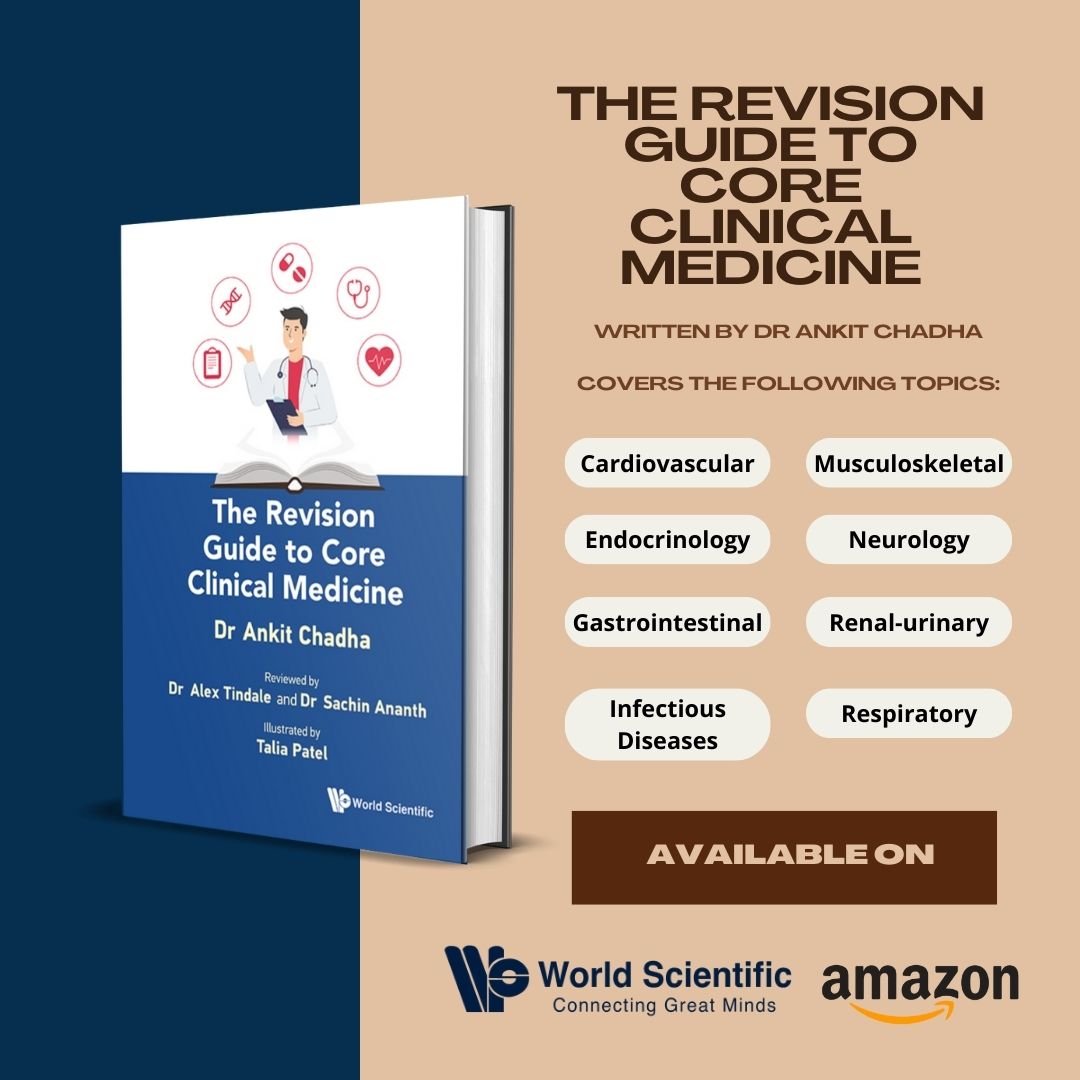Check out my book
Dear Friend,
Happy March, everyone! After working the past few weekends, I’m excited to share that I’ve had a well-deserved break this weekend. It’s been much needed, especially after completing two weeks of twilight shifts (from 3 PM to midnight). Although these shifts are 9 hours long, I find them more challenging than night shifts, as they significantly disrupt your sleep schedule. But, let’s not get too comfortable—I’ll be back on night shifts next weekend!
This week, I had a conversation with my publishers, who informed me that book sales have now surpassed 250 and are still growing. For those who are new to the In2Med community, I released my medical textbook, The Revision Guide to Core Clinical Medicine, last year. It’s aimed at medical students preparing for exams, as well as doctors studying for the MSRA, PLAB, and MRCP.
The book covers eight essential specialties: cardiovascular, endocrinology, gastrointestinal, respiratory, musculoskeletal, infectious diseases, neurology, and renal medicine. It’s a unique resource designed to help you succeed in medical exams.
Since its release, a few students have reached out, asking what sets my book apart from others and why I would recommend it. So, this week, I’d like to take a moment to highlight some key features of my book. (Apologies in advance for the slight sales pitch!)

Emphasis on Background Physiology
Unlike many revision guides, each chapter in my book begins with an overview of the foundational physiology that underpins the content. For instance, in the cardiovascular chapter, we start by exploring the heart’s action potential, the cardiovascular system, the coagulation cascade, and how to interpret ECGs. This solid grounding in physiology makes understanding the associated conditions much easier.
Pharmacology Sections
I firmly believe that a solid understanding of pharmacology is essential for any good doctor. That’s why each chapter includes a dedicated pharmacology section, highlighting the key drugs relevant to the conditions covered. For every drug, we break down its mechanism of action and focus on the most important side effects that you need to know.
Aligned with the UKMLA Syllabus
The conditions discussed in this book are aligned with the UKMLA syllabus, ensuring that you’re covering all the essential topics. The management strategies provided are based on the latest NICE CKS guidelines and are current as of the publication date of the book.
Highly Illustrative
As a visual learner myself, I made it a priority to design this textbook to be both visually engaging and educational. Each chapter is colour-coded and filled with numerous illustrations to help reinforce learning and improve retention. Below, you can see some sample pages for a closer look.
I truly hope you take the time to explore the book and find it helpful. Don’t forget to check out the fantastic reviews it’s received on Amazon, and feel free to click the button below to read a free sample.
Wishing you all a wonderful week ahead—looks like the sun has finally decided to make an appearance!
Drug of the week
Carbamazepine
This is an agent which blocks sodium channels in the CNS by binding and prolonging the inactivated state of channel.
Its action is use-dependent, so it is more active during seizures characterised by excessive neural activity.
It has teratogenic potential and so are used with caution during pregnancy.
Carbamazepine is used in the management of focal and secondary generalised seizures, as well as trigeminal neuralgia.
It can worsen absence and myoclonic seizures.

A Brain Teaser
A new point-of-care test has been developed to detect individuals infected with SARS-CoV-2 (COVID-19). Over 3 months, 1100 patients who attended the emergency department were randomly selected to be tested for COVID-19. The new point-of-care test was positive in 150 of these patients, of which 100 had COVID-19 infection confirmed by PCR. COVID-19 was also confirmed by PCR test in 30 of the patients who tested negative on the new point-of-care test.
What is the positive predictive value (PPV) of the new point-of-care test?
A: 66.7%
B: 76.9%
C: 94.8%
D: 96.8%
E: 98.4%
Answers
The answer is A – 66.7%
The positive predictive value (PPV) is calculated using the true positives (TP) and false positives (FP). PPV = TP / (TP + FP). In this case, TP = the 100 patients who tested positive with the new test and were confirmed to have COVID-19 by PCR. FP = those who tested positive with the new test but did not have COVID-19 confirmed by PCR, which is 50 patients (150 total positive – 100 true positives). So, PPV = 100 / (100 + 50) = 0.6667 or 66.7%. Therefore, the correct answer is 66.7%.
76.9% is incorrect. This is the sensitivity of the test. Sensitivity is calculated using the true positives (TP) and false negatives (FN). Sensitivity = TP / (TP + FN). In this scenario, FN = the 30 patients who tested negative with the new test but were confirmed positive on PCR.
94.8% is incorrect. This is the specificity of the test. Specificity is calculated using the true negatives (TN) and false positives (FP). Specificity = TN / (TN + FP). In this scenario, TN = the 920 patients who tested negative with the new test and were confirmed negative with PCR.
96.8% is incorrect. This is the negative predictive value (NPV). NPV is calculated using the true negatives (TN) and false negatives (FN). NPV= TN / (TN + FN).
98.4% is incorrect. As above, in this scenario PPV = 100 / (100 + 50) = 66.7%.




